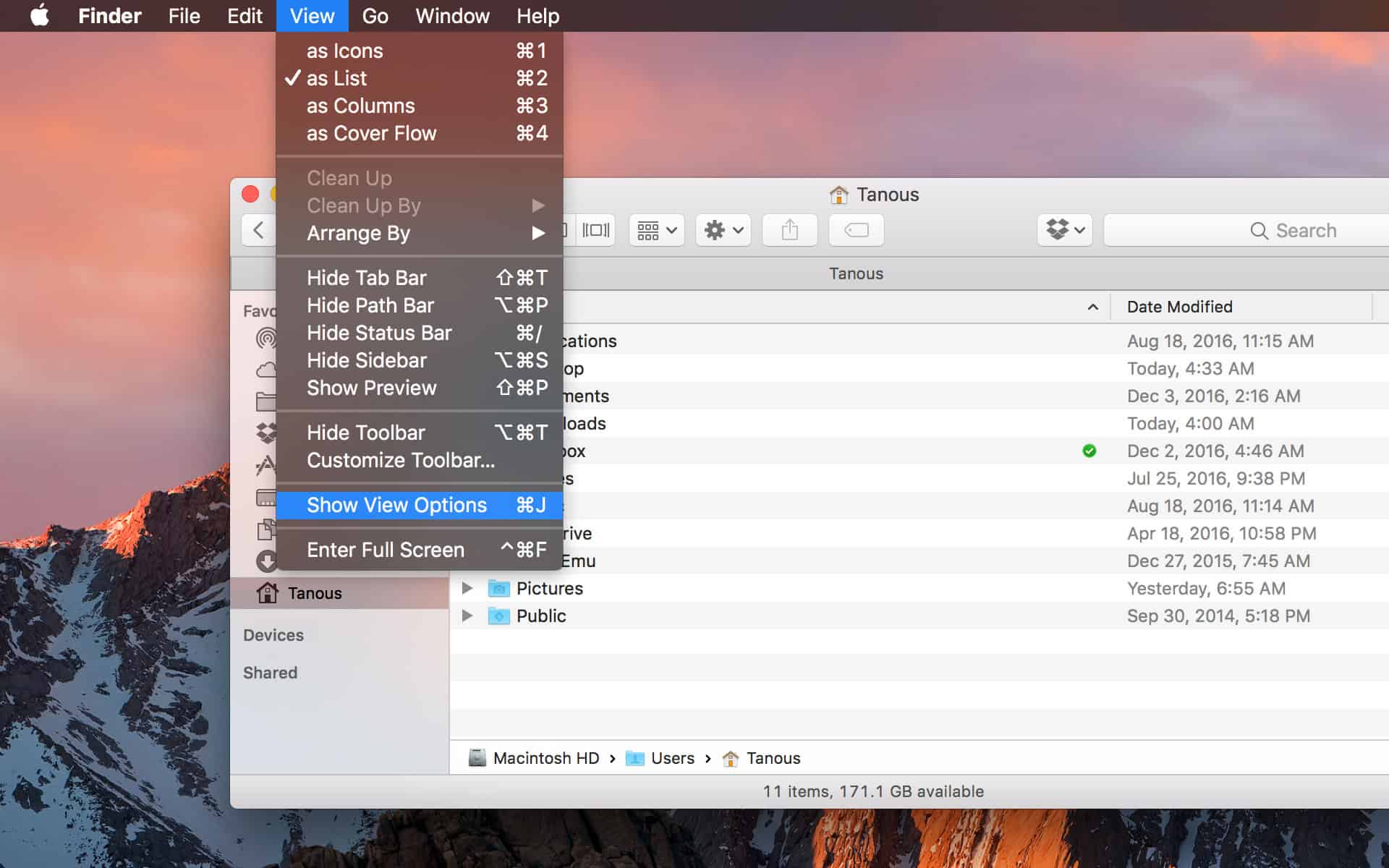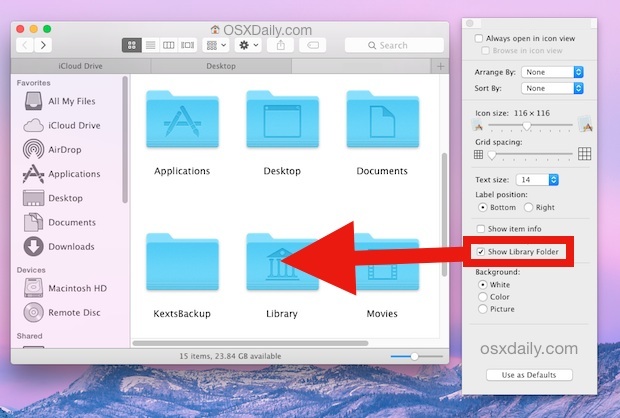Learn how to access the hidden Library folder in your Home folder on your Mac so you can tweak app settings and access app files.
- Why Doesn't My Library Folder On My Mac Show Up Windows 10
- Why Doesn't My Library Folder On My Mac Show Up Iphone
Inside the home folder on your Mac is a Library folder that stores app-specific files and settings, personal settings, and some data. The files and settings in the Library folder should be left alone for the most part. But, you may want to tweak the settings for an app, which may require accessing the Library folder. Or, maybe an app backs up data to the Library folder and you want to copy that to an external drive.
As of Mac OS X Lion (10.7), the Library folder in your home folder is hidden by default. That doesn’t mean you can’t get to it. It’s hidden so you don’t accidentally delete settings and data, damaging apps in the process. So, if you decide you want to access the Library folder, be very careful.
- I often use the 'Library' folder in my home folder /. The Library folder there (/Library/) is shown (unhidden), and that is not the question. I would like to also always show the menu point 'Library' in the Finder menu under the word 'Go'. Normally it only shows when I hold the Option ⌥ key the menu is open. I tried to assign 'Library' to.
- Dec 20, 2018 Options to Show User Library Click on your Users folder, open it in Column view, and select View Show View Options then check the box for Show Library Folder If Library isn’t an option, check that you’re in Column View Select your User folder, and press Command+ J.
I suddenly realized that my library folder does not show up in my home folder. I can find items in the folder if I search for them, and if I navigate upwards I can see the Library folder. But if I do anything else, the folder disappears from my home folder. As an experiment, I duplicated the folder to my deskptop.
Today we’re going to cover different ways of accessing the hidden Library folder in your home folder and how to make it permanently available in Finder.
What is the Path to the Library Folder?
The Library in your home folder is written as ~/Library. The tilde (~) character is a shortcut for your home directory. For example, on my Mac, that would expand to /Users/lorikaufman/Library.
Access the Library Folder Using the Go to Folder Option
If you want to access the Library folder only occasionally, you can use the Go to Folder option in Finder.
Open Finder or just click on the desktop. Head to Go > Go to Folder, or hit Cmd + Shift + G.
Type:~/Library in the Go to the folder box on the dialog box and click Go or press Enter.
If you have one or more Finder windows open, the Library folder opens in the currently active window. If no Finder windows are open, a new one opens to the Library folder.
Access the Library Folder Using the Terminal

If you prefer using the command line, you can access the Library folder using the Terminal.
Why Doesn't My Library Folder On My Mac Show Up Windows 10
Go to Utilities > Terminal in the Applications folder. To access the Library folder directly in the Terminal, type:cd ~/Library at the prompt to switch to the Library folder.
You can type:ls at the prompt to get a detailed folder listing. You can work with the files in the Library folder directly on the command line. Just be careful.
You can also use the Terminal to open the Library folder in a Finder window. Type:open ~/Library at the prompt and hit Enter.
Access the Hidden Library Menu Option in Finder
The Library folder is available on the Go menu in Finder, but it doesn’t show on the menu by default.
To temporarily show the Library option on the Go menu, open the menu and press the Option key. The Library folder shows up between Home and Computer on the Go menu. Keep the Option key pressed while you move your mouse down the menu and select Library.
If you’re using a Windows keyboard with your Mac, press the Alt key.
Show the Library Folder Permanently in Finder
If you access the Library folder often, you can permanently show the Library option on the Go menu and the Library folder in your Home folder.
Open Finder and head to your Home folder using the left pane or by pressing Cmd + Shift + H. Then, go to View > Show View Options, or hit Cmd + J.
A dialog box displays with options you can set for your Home folder. Check the Show Library Folder box at the bottom of the dialog box. The Library folder now shows up in your Home folder in Finder windows and the Library option becomes permanently available on the Go menu.

When you permanently show the Library folder in Finder, you can hit Cmd + Shift + L to open it in a Finder window, in addition to selecting the Library option on the Go menu.
Happy Tweaking, But Be Careful

The Library folder is hidden by default for a good reason. So, before tweaking settings and changing files in the Library folder, make sure you know what you’re doing.
An iMovie library holds all the media and data used to make movies in iMovie. If your iMovie library is large and you want to free up storage space on your Mac, you can move your iMovie library to an external drive.
Before you move an iMovie library, it's a good idea to back up your Mac.
Moving your library to an external hard drive doesn’t affect any iMovie Theater content you have moved to iCloud.
Prepare your drive
You can store your library on an external storage device such as a USB Thunderbolt drive formatted as APFS or Mac OS Extended (Journaled). Apple doesn’t recommend storing iMovie libraries on external storage devices like SD cards and USB flash drives, or drives shared on a network.
You can’t store your library on an external drive or other disk used for Time Machine backups.
Move a library to an external storage device
- Quit iMovie.
- Select your external drive in the Finder, then choose File > Get Info.
- If the information in Sharing & Permissions isn’t visible, click the triangle , then make sure the 'Ignore ownership on this volume' checkbox is selected. If it's not selected, click the lock icon to unlock it, enter an administrator name and password, and then select the checkbox.
- Click your desktop to make sure that you’re in the Finder, then choose Go > Home from the menu bar at the top of your screen.
- Open the Movies folder, then drag the file named iMovie Library to your external hard drive.
- When the library file is finished copying to your external drive, double-click the library file on the external drive to open it in iMovie. If an alert appears asking you to give iMovie access to a removable volume, click OK.
If you clicked Don't Allow, in the Finder choose Apple menu > System Preferences, click Security and Privacy, then click Privacy. Click Files and Folders in the sidebar, then select 'Removable Volumes' under iMovie. - Make sure the library you moved contains all your media, then drag the original file from your Movies folder on your Mac to the Trash.
If you disconnect the external drive
Why Doesn't My Library Folder On My Mac Show Up Iphone
When your external drive is connected to your Mac, the library you moved to the external drive opens automatically in iMovie. If you disconnect the external drive containing the library, iMovie opens to a new, empty library created in the Movies folder on your Mac. iMovie automatically saves any projects you create and media you import in the new library.
If you want to open the library you moved to an external drive, you can open it after you reconnect the external drive. You can then move clips, events, and projects between libraries.